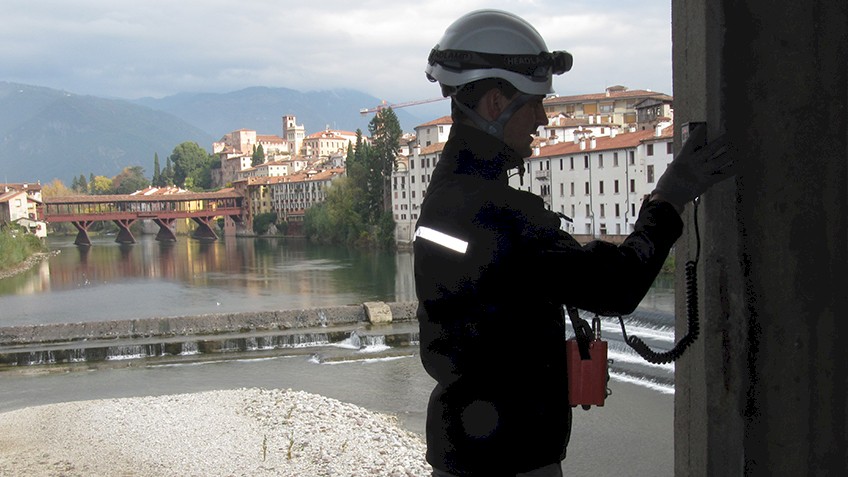
Reinforced Concrete structure surveys
Assessment of RC structures is usually required due to two main factors: problems related to their durability or the occurrence of new design conditions (e.g. the occurrence of new seismic loads required by structural codes or the increase of the accidental overloads often required by the owner). These facts lead to a widespread awareness of the need for a repair or a reinforcement of the structures themselves, which requires the knowledge of the characteristics of the structures, of the two main component materials (steel and concrete) and of their interactions (mechanical, chemical and physical).
As usual, the knowledge must be developed starting from visual examination to help to find elements that are essential in understanding the actual decay phenomena, or at least how they are apparently manifested (cracks, defects, deteriorations such as surface delaminations, detachments, spalling). This examination should be associated with the collecting of the data about the construction period and the changes occurred. As a matter of fact, the design drawings of RC structures should be available and should be examined preliminary to any structural assessment, however, in many cases, such data is not available. Based on the data collected, it is possible to plan surveys based on tests to be carried out both in situ and in the laboratory on samples taken at the site.
The NDT are most frequently used to characterize the concrete: the ultrasonic tests measure the velocity of propagation of the ultrasonic pulses, the Schmidt hammer tests determine the rebound index and the penetration tests (e.g. with Winsor probe) measure the penetration depth of a metallic probe. These techniques allows to perform indirect measurements of mechanical quantities such as the modulus of elasticity and the compressive strength of the concrete.
To check the deterioration of rebars due to electrolytic corrosion, specific measurements can be performed through tests that plot the contour of electrical potential: the magnitude and the gradient of this potential highlights the areas where there are suitable conditions to activate the corrosion of the
bars. Other complementary techniques determine the speed of corrosion underway.
Slightly destructive tests can be performed by drillings that allows the measurement of the depth of carbonatation or by pull-out tests which, through the extraction of a concrete wedge, indirectly provide the mechanical properties of the concrete. Metallic bars can be detected by the use of electromagnetic covermeters that may be used with RC structures for several purposes. These include ensuring correct location and cover of reinforcing bars after concrete placement, investigating of concrete members for which records are not available, locating reinforcement as a preliminary to some other form of testing in which reinforcement should be avoided, locating buried ferromagnetic objects other than reinforcements.
Furthermore the execution of in situ tests identifies the most appropriate location to make boreholes and to take samples to be used to carry out laboratory tests for the determination of mechanical material properties.
High reliability of the results can be pursued by combining different test methods through experimental correlation curves. Good results are provided through correlation between the ultrasonic pulse velocity and the rebound number provided by Schmidt hammer tests or between the same rebound number and the compressive strength provided by laboratory tests.



